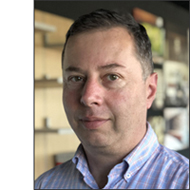This article highlights the advantages of using the latest generation of BIM software for energy modeling by the presentation of a specific case study.
The case study was carried out by Blue Green Engineering (BGe), an Australian company with long and extensive experience in Building Energy Design, and refers to an existing building that was constructed back in 2012. The building has an area of around 1000 m² and consists of numerous offices, community and activity rooms, laundry, kitchen and shower facilities, as well as the typical mechanical services.
Regarding the selection of the energy simulation software, BGe considered the following criteria:
Based on the above criteria, the 4M FineGREEN simulation software package was chosen, due to the following reasons:
The final choice decision was empowered by the fact that FineGREEN belongs to the Official EnergyPlus Third-Party Graphical User Interfaces (https://energyplus.net/interfaces#finegreen) and it is also registered within the BEST (Building Energy Software Tools) Directory (https://www.buildingenergysoftwaretools.com/software/finegreen).
The use of BIM energy modeling software was necessary to determine the annual consumption of the building reliably and efficiently. Energy modeling software saves time when optimally determining building fabric construction and building services. The software is especially beneficial when it reduces time that energy assessors spend running multiple iterations of the calculations.
Regarding the specific project details, Blue Green Engineering (BGe) was commissioned to perform an energy audit for a community services building in Mt. Druitt, NSW, which is operated and owned by the NSW St. Vincent de Paul Society. The building was constructed in 2012. The building’s area was just under 1000 m². The building had numerous offices, community and activity rooms, laundry, kitchen and shower facilities. The mechanical services of the building consisted of the following:
Following the Australian Standard 1680.2, the minimum HVAC (heating ventilation and air conditioning) service levels assume a maximum indoor temperature of 24ºC for cooling and 21ºC for heating, as well as a minimum lighting level of 320 LUX for offices, 150 LUX for assembly spaces and 40 LUX for corridors.
The client provided access to 12 months of energy bills. However, due to maintenance issues, many of the service levels were not met because a large number of equipment was not operating. Hence, the energy bills did not reflect the energy baseline accurately (the term ‘energy baseline’, refers to the annual energy consumption of a building before any energy savings upgrades have been implemented).
Therefore, to predict the energy consumption of all the services in the building, two energy models were constructed:
As a result, via this calibrated energy model, it was possible to calculate the baseline energy consumption for a building that met all service levels.
The baseline data was then used to objectively quantify the financial benefits of proposed upgrades. The proposed upgrades included the following:
The following figures show the energy modeling process.
Results confirmed that FineGREEN provides a suitable solution for energy modeling on real conditions. More specifically:
For example, in this case study two separate energy models (model 1: energy baseline with the service levels NOT being met; model 2: calibrated energy baseline with the service levels being met) were generated. Therefore, FIneGREEN performed quickly and reliably a large number of calculations for 8.760 hours for a typical year and also performed multiple iterations of the calculations themselves.
For all the above reasons, FineGREEN has led to considerable time-savings as it produced reliable results in a short time which were facilitated by an optimal interface for outputting information into reports.
 Vasilios Giotis is Director of Blue Green Engineering, a sustainable design company based in Australia. He is a professional mechanical engineer with post-graduate qualifications in renewable energy and energy efficiency. Vasilios has had many years of Australian and overseas experience in the sustainability field and has been involved in many large and small green projects. Vasilios believes that practical but innovative sustainable engineering can contribute to a more ecological way of living. He can be reached at v.giotis@bluegreeneng.com.au.
Vasilios Giotis is Director of Blue Green Engineering, a sustainable design company based in Australia. He is a professional mechanical engineer with post-graduate qualifications in renewable energy and energy efficiency. Vasilios has had many years of Australian and overseas experience in the sustainability field and has been involved in many large and small green projects. Vasilios believes that practical but innovative sustainable engineering can contribute to a more ecological way of living. He can be reached at v.giotis@bluegreeneng.com.au.
AECbytes content should not be reproduced on any other website, blog, print publication, or newsletter without permission.
Copyright © 2003-2025 AECbytes. All rights reserved.
